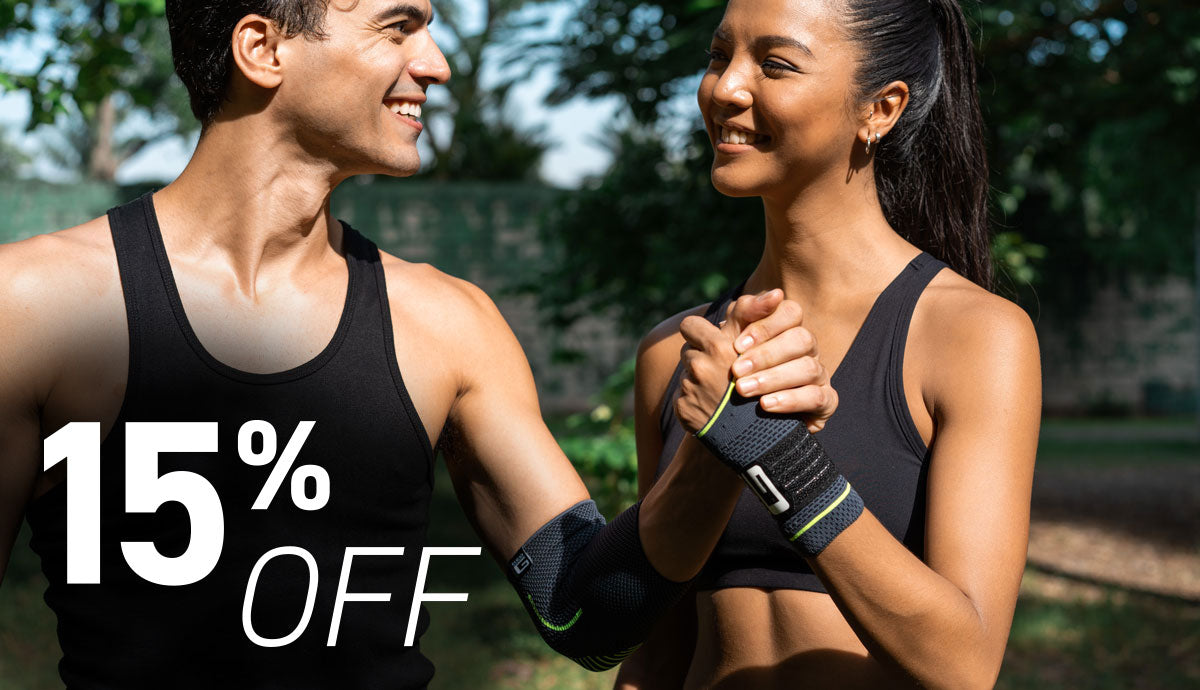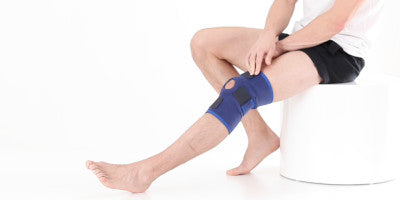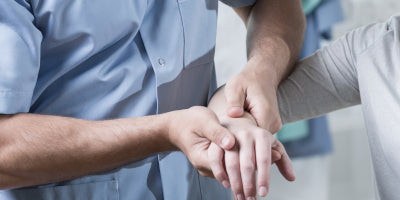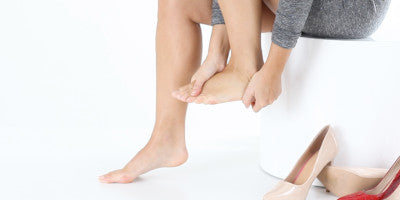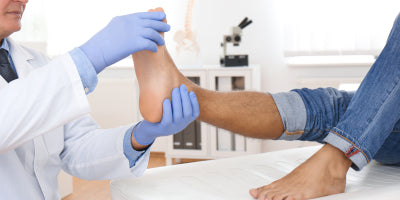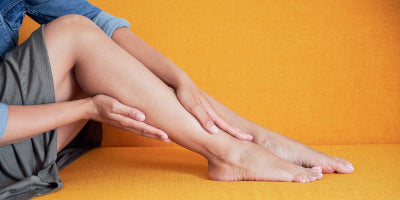Ask The Physio - Frequently Asked Physiotherapy Questions

Last Month, we gave you the opportunity to put your questions to our in-house physiotherapist, Alex. After going through your responses, we’ve compiled the best and most frequently asked questions and had Alex answer them!
I have had pain in my knees for several months and so far, nothing has helped. What is causing my issue?
Alex:
Without a full assessment, it is difficult to say what a potential cause for this pain may be. My first point of advisement would be to try and have an initial assessment from a physiotherapist. If you are lucky enough to have access to a first contact physiotherapist within your local GP setting, these are great people to see. Additionally, they’re usually quicker than a referral to the physiotherapy department in your local hospital.
It is worth considering that if the pain in your knees is unalleviated by treatments that have focused on the knee joint, it may be that the pain is a result of problems elsewhere. Hip alignment issues or muscle imbalances could be causes above the knee, while foot misalignment or flat feet and fallen arches could be causes below the knee. Feet issues that cause associated pain in other areas of the body, such as in the knees, are only made worse by wearing unsupportive footwear. By having a full assessment, you should be able to identify any issues within the knee joint and then what the most likely cause is, which will help to develop a treatment plan. A Neo G knee support might alleviate your pain, but as already stated, speak with your physiotherapist.
I have just injured my ankle; how long will it take before I can get back running again?
Alex:
Ideally, you should get back being active as soon as possible, even if it’s just at lower intensity such as walking rather than running. However, a few factors will determine how soon this could be post-injury.
Type of injury: Sprains and strains could be a couple of days rest, fractures and ligament ruptures would be significantly longer.
Severity: Similar to the type of injury, the severity of an injury could impact recovery time. For example, a minor sprain could allow you to be back walking within two to three days. However, following a severe sprain, it may be weeks before you can be fully weight bearing and walking.
Frequency: With most ankle injuries there is some lasting damage to ligaments. This makes them more lax and increases the likelihood of reinjury. This could lead to a minor injury taking longer to recover than a similar injury that is a first occurrence.
I’m returning to recreational and competitive sport after several years away. What should I avoid to reduce the risk of injury?
Alex:
Provided all the activities you undertake are within the remit of the sport you’re playing, then nothing should be off limits. However, the intensity at which you perform these activities should be managed carefully. As you have been away from sport for a prolonged period of time, your body will react as if you were a novice again. Therefore, it isn’t advised that you start trying to beat your personal bests in your first training session. One of the best things to do is take things back to basics and relearn the fundamental movements required for your sport or activity again. This is especially important for strength training and weightlifting. Perfecting the correct movements with lighter weights means you can safely increase the intensity, either by increasing repetitions or weight. If your movement patterns are incorrect, then you can put unnecessary strain on your muscles and joints, especially when you are fatigued, which can then result in injury.
We have a collection of supports for sport you can explore here.
I suffer from plantar fasciitis. Will I ever get better, or will I have this for the rest of my life?
Alex:
Yes, you will be able to get better. However, if you don’t resolve the cause of your plantar fasciitis, then it will keep coming back. Basic gel supports and stretching the bottom of your foot can both serve as short term fixes for symptoms of plantar fasciitis. To have a lasting impact against plantar fasciitis, it’s important to understand the function of the plantar fascia and what it isn’t designed for. Strain will be put on your plantar fascia, down to the anatomical position of your heel, when pushing off from each stride. However, this position may be due to tight calf muscles on the affected side, weakness in smaller accessory muscles in the hip region on the opposite side or even your ability to rotate in your spine. It is because of this I would highly recommend seeing a physiotherapist, or a podiatrist, who can assess many areas of your lower body to determine the cause of your plantar fasciitis and then develop treatment for long term relief. One thing to note is if you have been suffering for a long time the assessment is even more crucial as excessive stress on the plantar fascia can result in bone spurs in the heel which will need to be treated differently. At Neo G we have a range of orthotic insoles that can help with plantar fasciitis. If you haven't already, I'd recommend reading one of our other blogs on how to combat plantar fasciitis with specific exercises, you can find it here.
I have swelling on my joints after activity, should I put ice on the area to bring the swelling down?
Alex:
Excellent question, for a number of years people have recommended the PRICE (Protection, Rest, Ice, Compression, Elevation) principle for the management of soft tissue injuries. In recent years, this principle has been challenged as there has been misinterpretation of its intention, with people believing they should be sitting with their feet up and an ice pack on, completely resting.
The new principle one should work towards for soft tissue injury management is PEACE and LOVE. This principle works in two stages. Firstly, PEACE (Protect, Elevate, Avoid anti-inflammatories, Compress, Educate) is for immediately after injury and again focuses on protecting the joint but for as short a time as is possible, with protection and elevation ideally lasting only one to three days. A key contrast to PRICE is “A”, avoiding anti-inflammatories, including Ice. The reason for this is that while ice will help reduce some swelling, you also inhibit the body’s natural responses, negatively impacting tissue healing. Therefore, it is now recommended you try to avoid icing the area. Instead, use compression to help bring the swelling down, via a support or tape, depending on the location of your swelling. Following the avoidance of anti-inflammatory, we come to educate in the principle. This one really falls on physiotherapists to give you the knowledge you need to achieve the best recovery. The key point we are now trying to educate is the benefits of an active approach to recovery, instead of a passive approach.
Following PEACE, there is then LOVE (Load, Optimism, Vascularisation, Exercise). Building on the Education step from PEACE, specifically the need for an active approach to recovery, normal levels of activity should resume as soon as you are able to. Therefore, your injured area should take on the correct Load, one that increases tolerances and promotes repair, without increasing pain. Optimism is key in this stage of recovery, as your positivity can carry you through periods of frustration. Through Vascularisation, or aerobic exercise, cardiovascular activity (that doesn’t cause pain) can increase blood flow to injured areas. Finally, Exercise, like Vascularisation, can increase mobility, strength and proprioception; the latter being the body’s ability to detect location, action, and movement. Restored proprioception is important to reduce the likelihood of reinjury.
So there you go, five of your most frequently asked questions answered by Alex, the Neo G physiotherapist!
Our VCS range offers varying levels of support from mild to moderate to firm to provide optimum protection and stability. As a one size solution, these supports are fully adjustable to allow for a custom fit. In addition to this, the heat therapeutic neoprene helps to warm muscles and joints during exercise and rehabilitation, making the VCS range perfect for supporting instability during weights and gym training, as well as helping strains, sprains and weak, arthritic joints.
NeoThotics orthotic insoles from Neo G are biomechanically engineered in conjunction with leading podiatrists to be class one medical devises that provide you with stability and support. To Learn more about the range, click here.

For support in everyday activities, the Airflow and Airflow+ ranges offer lightweight, slimline supports that protect and reduce the impact on joints and muscles. Perfect for taking a walk, playing sport or support with day to day strain.
